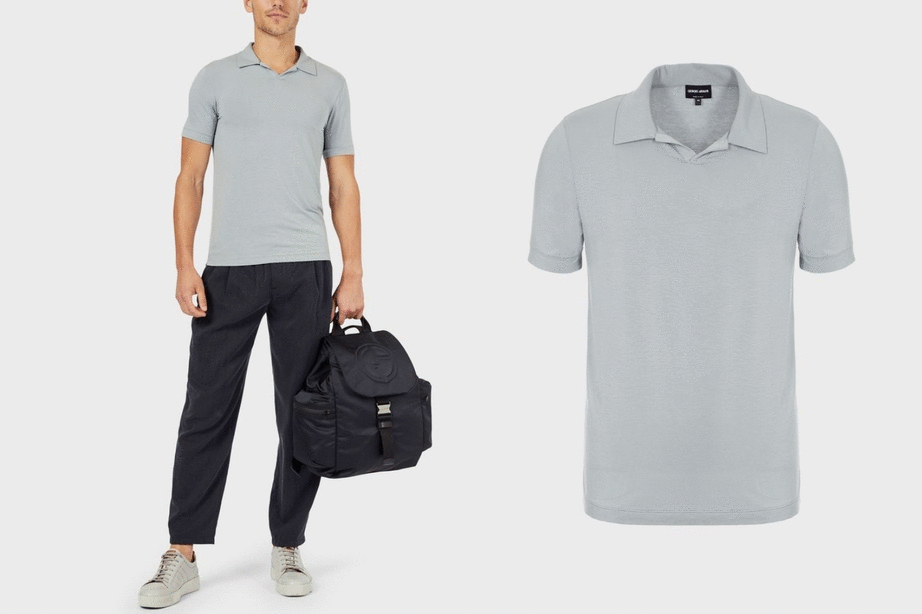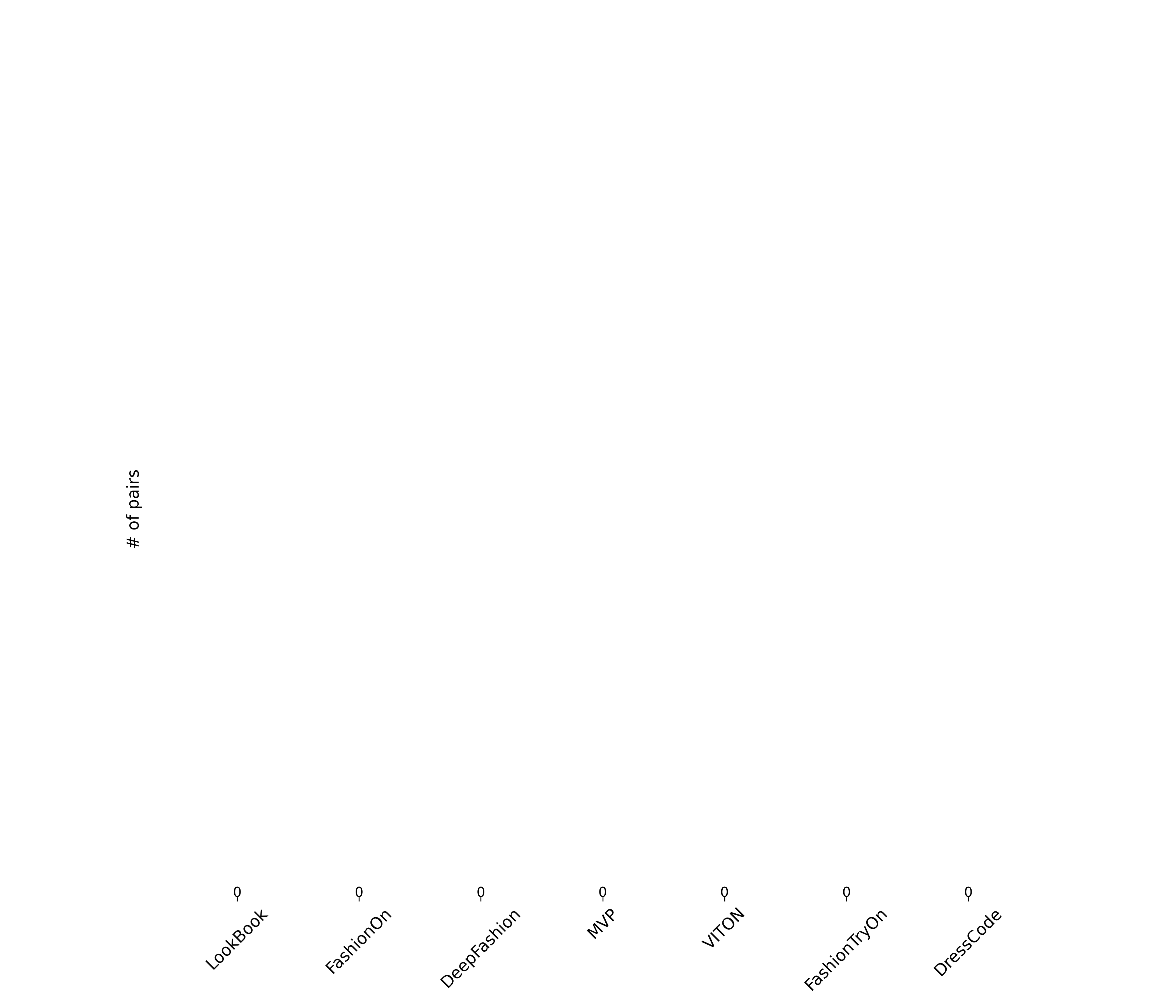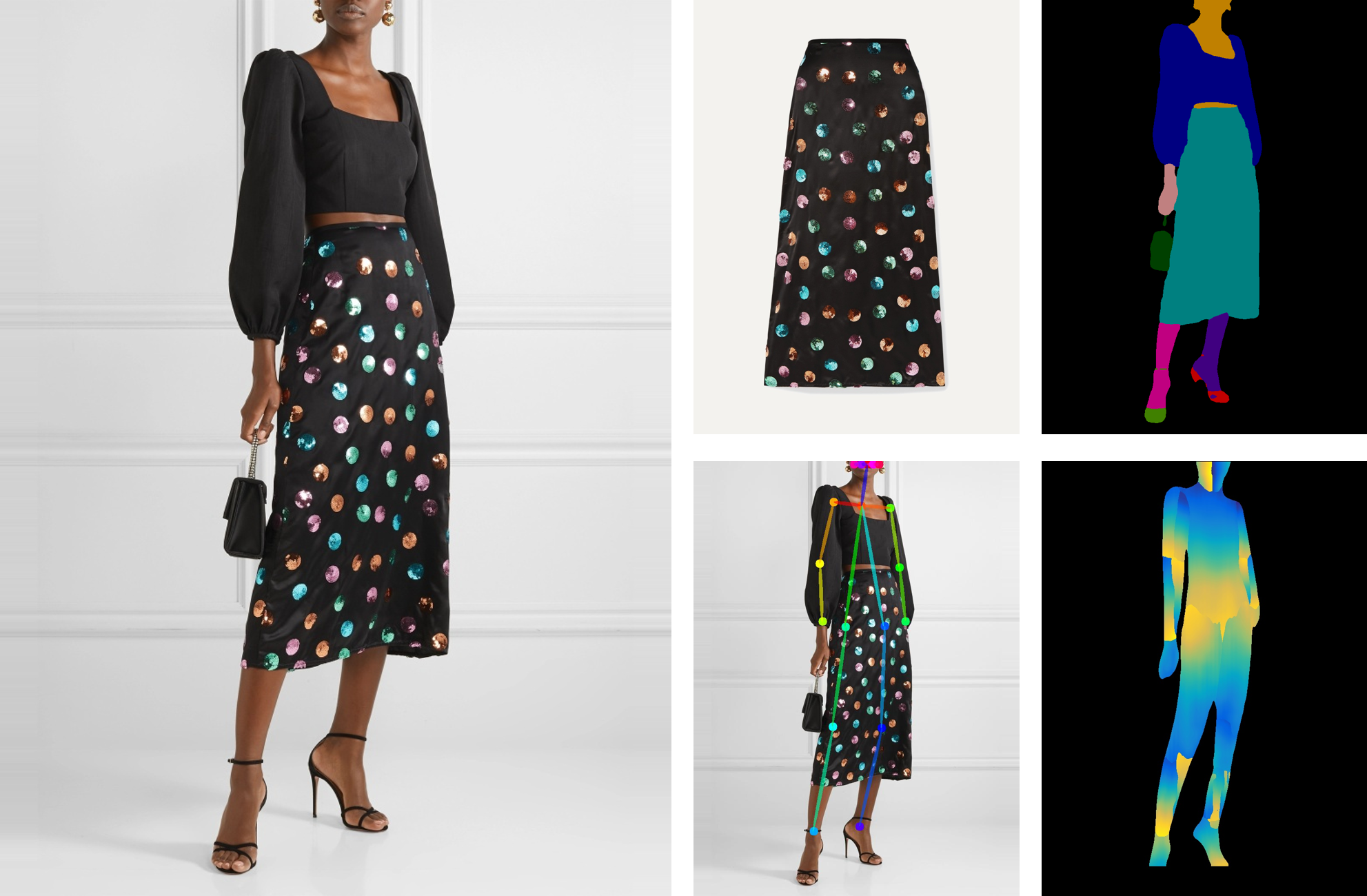

Dress Code Dataset
D. Morelli, M. Fincato, M. Cornia, F. Landi, F. Cesari, R. Cucchiara
Dress Code: High-Resolution Multi-Category Virtual Try-On
European Conference on Computer Vision (ECCV)
[Paper] [Dataset][Try-On Demo]

By making any use of the Dress Code Dataset, you accept and agree to comply with the terms and conditions reported [here].
Please cite with the following BibTeX:
title={{Dress Code: High-Resolution Multi-Category Virtual Try-On}},
author={Morelli, Davide and Fincato, Matteo and Cornia, Marcella and Landi, Federico and Cesari, Fabio and Cucchiara, Rita},
booktitle={Proceedings of the European Conference on Computer Vision},
year={2022}
}
Dataset
We collected a new dataset for image-based virtual try-on composed of image pairs coming from different catalogs of YOOX NET-A-PORTER Group.
The dataset contains more than 50k high resolution model clothing images pairs divided into three different categories (i.e. dresses, upper-body clothes, lower-body clothes).

Summary
- 53792 garments
- 107584 images
- 3 categories
- upper body
- lower body
- dresses
- 1024 x 768 image resolution
- additional infos
- keypoints
- label_maps
- skeletons
- DensePose
Additional Info
Along with model and garment pair image, we provide also the keypoints, skeletons, image label map, and densePose.

Keypoints
For all image pairs of the dataset, we stored the joint coordinates of human poses. In particular, we used OpenPose [1] to extract 18 keypoints for each human body.
For each image, we provided a json file containing a dictionary with the keypoints key. The value of this key is a list of 18 elements, representing the joints of the human body. Each element is a list of 4 values, where the first two indicate the coordinates on the x and y axis respectively.
Skeletons
Skeletons are rgb images obtained connecting keypoints with lines.
Human Label Map
We employed a human parser to assign each pixel of the image to a specific category thus obtaining a segmentation mask for each target model. Specifically, we used the SCHP model [2] trained on the ATR dataset, a large single person human parsing dataset focused on fashion images with 18 classes.
Obtained images are composed of 1 channel filled with the category label value. Categories are mapped as follows:
1 hat
2 hair
3 sunglasses
4 upper_clothes
5 skirt
6 pants
7 dress
8 belt
9 left_shoe
10 right_shoe
11 head
12 left_leg
13 right_leg
14 left_arm
15 right_arm
16 bag
17 scarf
Human Dense Pose
We also extracted dense label and UV mapping from all the model images using DensePose [3].
References
[1] Cao, et al. "OpenPose: Realtime Multi-Person 2D Pose Estimation using Part Affinity Fields." IEEE TPAMI, 2019.
[2] Li, et al. "Self-Correction for Human Parsing." arXiv, 2019.
[3] Güler, et al. "Densepose: Dense human pose estimation in the wild." CVPR, 2018.
Contact
If you have any general doubt about our dataset, please use the public issues section on this github repo. Alternatively, drop us an e-mail at davide.morelli [at] unimore.it or marcella.cornia [at] unimore.it.